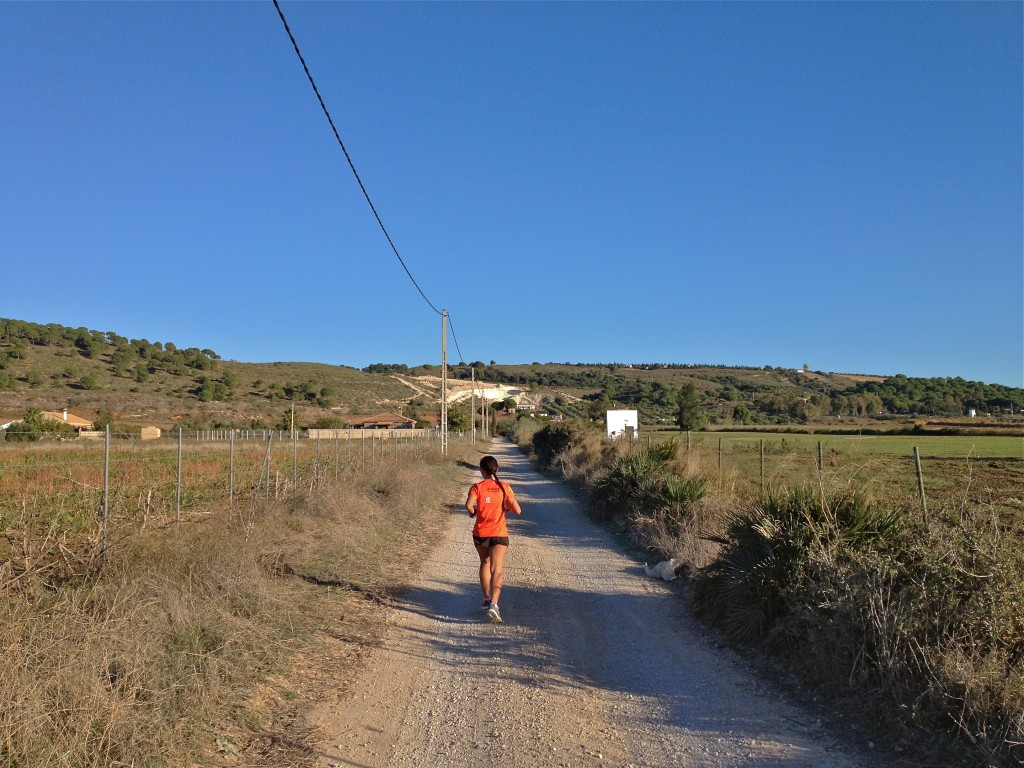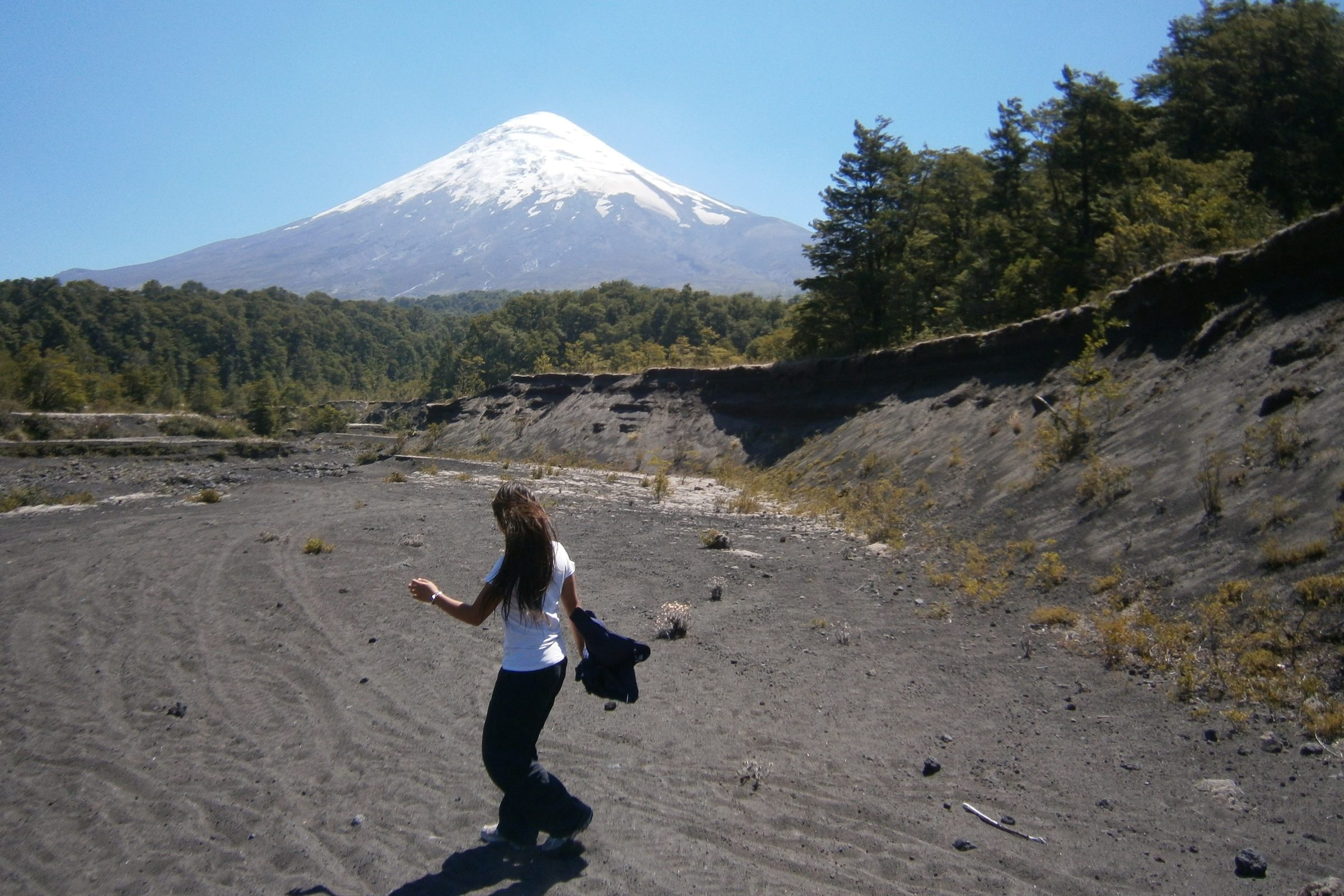Why Numbers Don’t Work for Trail Runners
When I started running in 2006, I did it not because I wanted to change my lifestyle or lose weight or run races, but because I was fascinated with the idea that an accelerometer in my shoe could track my distance and pace. More importantly, that I could measure my progress without having to track anything on a spreadsheet.
I latched on to the numbers quickly. Much like any other beginner, all I cared about was increasing speed and distance. I became acquainted with multiple apps and Garmin watches.
A year later, I learned about training efficiency and I crunched even more numbers. I timed the peaks and troughs in my training volume, paid close attention to overload, and meticulously kept track of my resting HR and HR reserve. There was one summer when I ran every single race held by the NYRR.
I was quantifying everything.
Then, I moved to the south of Spain in a small town called Arcos de la Frontera. It was the first time I ran up a hill that was less than 1/3 of a mile broken into three steep sections: it starts at 29% grade, drops to 18%, and goes up to 32% just before you reach the peak. It was brutal.
Suddenly, my average pace didn’t matter as much as keeping my HR down. I also had to learn how to run on gravel. Most of the trails in Arcos are rocky and I always slipped a little whenever I sped up. It wreaked havoc on my pacing.

Last week, I moved to Split where the trails are even greener and the hills aren’t as steep, but the course is more challenging. This is the view from Marjan Forest Park.

It has three peaks above sea level: Prva vidilica (125 meters), Druga vidilica (148 meters) and Treća vidilica (178 meters). Each peak has a long way and a short way of getting there. I can choose to take switchbacks, longer winding trails, steep or gradual ascents, a paved road, a dirt path, or a rocky terrain.

Regardless of what I choose, I always have to slow down. Much like Arcos, tracking my pace isn’t as useful on these trails. It would only frustrate me. Paths quickly turn rugged. Big rocks mean uneven footing. Shrubs can suddenly change to cacti! Daydreaming isn’t really much of an option.
Elevation gain is also tricky. It’s only as good as the satellite reception I can get on the trail. Once GPS accuracy gets a little spotty, so does my data. There’s nothing more frustrating than relying on data to validate the effort I put in to a run. I’m better off acknowledging ahead of time that the GPS will be less than ideal.
HR is really kind of the most reliable assessment of my trail running activities. In fact, I probably benefit more from ratings of perceived exertion since a lot of what I measure on the trail is qualitative:
- These hills are a lot of work for my quads.
- This descent puts too much load my knees.
- This terrain feels like work.
- These sharp turns force me to balance more.
The metrics that I value most on the trails are different.
I care about how difficult something feels so that I know whether to run it on an easy day or a hard day. I care about the hill grade, because moderately hilly terrain is great for short bursts of speed, whereas steep hills are better for bounding drills. I care about the type of terrain, in case I’m doing a long progression run and I want to avoid a surprise ascent in the fastest part of my run.
I imagine that a pretty expensive watch with a built-in altimeter would probably sort out my need to track elevation on the trail but, is it necessary? Not really.
I think the greatest value I derive from trail running is that it keeps me on my toes. Trails are constantly changing so I have to pay closer attention to my running: my form, foot-strike, the length of my stride. It teaches me how to become a more well-rounded runner and, that’s something I can’t really get from my watch.
Now, discovering unmarked trails? My GPS watch is usually pretty good at that.
This blog is participating in the Trail Runner Blog Symposium. Join the conversation at trailrunnermag.com

Sometimes, the cold numbers do a poor job at relating the amount of effort you put into a run.
You may be tired, you may be stressed, you may be dehydrated, an unusual wind may blow on you the wrong way, you may developing an injury or carrying along an old one you never acknowledged, you may be too present or too absent or maybe the food you ate left you sluggish…it does happen.
The truth is, even if you carry all the devices currently available, for a runner, the data points you end up with are at the most: Pace, cadence, HR, elevation, ground contact time, vertical oscillation, impact force distribution.
That’s a lot more than it ever was possible, but there are still a limited number of ways you can dice and slice that data.
The primary goal should be to accurately quantify training load. There are various TRIMP formulae out there, various RPE scales…based on heart rate scaling, threshold power scaling, lactate threshold, exponential, normalized, yada, yada, yada…all of them approximate reality to some level. They are worthy of calculation and interpretation. They do help in painting a picture of your fitness and training.
But, one thing is sure, tracking pace without accounting for elevation change is irrational. So, you will find a few more formulae out there that adjust pace based on elevation change over the course of a run.
But, one cannot stop there, you would also have to adjust pace based on external temperature, altitude, whether you are appropriately dressed for the conditions you are running in, for the type of terrain you are running on, etc.
(I just moved from California to Colorado and I can tell you all of those things matter greatly.)
All that rambling to say: It’s complicated all around. How you feel is the only benchmark that has not changed over the years. Easy will always feel easy and hard will always feel hard.
This being said, I am a firm believer that more data is not a curse, but a blessing. We just need to find new and better ways to interpret it. Accurately quantifying training load should remain a primary focus. Detecting and alerting runners to their breaking point (that magic line beyond which they are likely to get injured) shall remain the second priority. The third priority is simply stated, but hard to fully comprehend: Guide runners to achieve the most progress using the smallest training load possible.
This field is still young and imagination will have a big part in discovering it fully.
I agree. I think there’s 2 dimensions where data provides the most insight: Training load and performance. Am I training too hard or not hard enough? Am I getting better?
Training load gets complicated fast, because it bridges so many different factors. Hill runs, intervals, long runs, even running in the heat all overload different physical capacities and provide different training profiles. I think ultimately a better integrated model of bio-physical response is the only way forward.
Short of that it seems (as you point out) perceived effort is probably one of the most (if not the most) important indicators…which I guess begs the question why Smashrun doesn’t track that…yet.
So much work still to be done. Nice to see the field progressing so much in the last few years. Exciting place to be.
I remember asking some questions about TRIMPS and workload and Smashrun answered with SPI 🙁 some kind of one-run-performance that seems to use at most the pace…
I totally agree with Laurent’s message and as we discuss with Jacklyn on Twitter today i’ve found for myself that the average heart-rate x RPE is maybe the best answer to monitor my workload. I monitor the TRIMP-RPE in the last sliding 7 seven days and it’s nice. The “smart” TP TSS is regularly not accurate for me. On good point at TP is the superb dashboard graph of the acute and chronic workload. I was pretty close to my feeling. Make the maths with my TRIMP-RPE instead of their TSS would make it i guess…
I’ve chosen to do a global evaluation of my run and take the RPE especially from the most difficult part of my training. Note that it is very important to rate your workout during/at the end or just after it. Do not rate it after.
Some people find easier to rate on a 6 to 20 scale (i find it easier) but a 0 to 10 scale makes maths easier. But it’s not a big deal to convert from one to another 😉
Evaluating performance is really really hard… training at a higher average pace don’t really mean getting better… in the last months i’ve downsized my training programs focusing on two points : improving recovery (= run less and sleep more) and better polarization between two extremes : very slow running and very high intensity running (= i do not run between the two ventilatory thresholds). So with this i get less mileage on my graph and a slower average pace but i perform better.
In conclusion i think you’ve got the skills and talent to work on a great workload visualization which could become a really super atout in the competition ! i’ve subscribed to TP only for the TSS and the Performance Manager Chart.
Today because nobody on the market gives me the perfect web-based-answer (apps on the desktop are so 1.0 😉 ) , i’ve switched to a google spreadsheet :/ and i write down the most important things for me : time RPE and the time spent in 3 heart zone (Low, between the thresholds, over the lactate threshold)
Will you help me builiding the website i dream of 🙂 ?
TSS works well if you have it properly calibrated. For runners, that means performing regular lactate threshold tests. If your lactate threshold HR or pace are off, then your calculated TSS will be off as well.
Putting too much emphasis on HR is not that reliable either, BTW. There are a great many reasons why on any given day your HR could be +/- 10 its baseline. Some of them include: Accumulated fatigue, dehydration, illness (from the slightest cold to any kind of muscular inflammation), external temperature, elevation change, whether you are dressed properly or not, etc.
RPE in and of itself can tell an interesting story.
“HR zone x time in zone” is another metric frequently used.
The truth, though, is that you cannot compare all and every run in attempt to measure your progress.
To measure your progress, you must define a number of benchmark runs, where you control as many parameters as possible.
Example: A 10K run, on the same course, ran in similar external conditions (temperature and overall weather), with the same warm-up, with the same goal (most likely “to run the distance in the best time” or “to maintain a constant pace over the distance”) and maybe using the same shoes (I don’t really think that makes a big difference, but if you wanted to control as many variables as possible, you would want to control that as well.).
You could define 3 types of such benchmark runs: 1) To track maximal speed, 2) To track aerobic capacity, 3) To track specific endurance.
You could perform these benchmark runs regularly and track your progress over time.
In my experience, that’s the only thing that can work and have any meaning.
Comparing my easy runs to my recovery runs to my speed sessions to my tempo runs to my long runs makes little sense to me since the goals and circumstances of these various workouts have very little in common more often than not.
Smashrun pro definitely needs a 1 number measurement of training load. Right now the training bands I think are the first step of something far more interesting than TRIMP-RPE, because they’re an aggregate and not an average. And because of that they can accurately capture and accounting for intervals and fartleks, or any run with a mix of high intensity and recovery. But what they don’t do is boil that down to answer how much load. That’s the next step. And I think that kind of weighted number is kind of the holy grail, ideally combining not just RPE and heart rate, but also hill work. It’s that kind of cpu intensive number crunching, as opposed to shorthand calculations where I hope there’s a lot of value.
The SPI is just a performance index based on the purdy point curve allowing you to weight a flat run on a scale from walking 0 to world record pace 1000 for any distance. I find it really useful for comparing races of varying distances to find my real best efforts (was that last 5k better than the 10k I ran last month?)
I don’t mind a single number as a rough index of how much effort I put into a run, but I don’t attach much insight to such a number. Arguably, with recent watches that take into account your biometrics, HR variations, time and pace to compute the number of calories burned over the course of a run, that single number could be “calories burned”.
After all, power output is directly related to energy expenditure.
But, SPI doesn’t bother me, even though it’s an opaque number, which I cannot attach value to since I don’t know if it’s drawn from a hat or calculated using a formula that makes any sense to me.
See my other comment for benchmarks that would be a lot more meaningful to me.